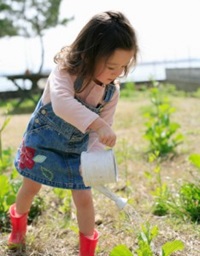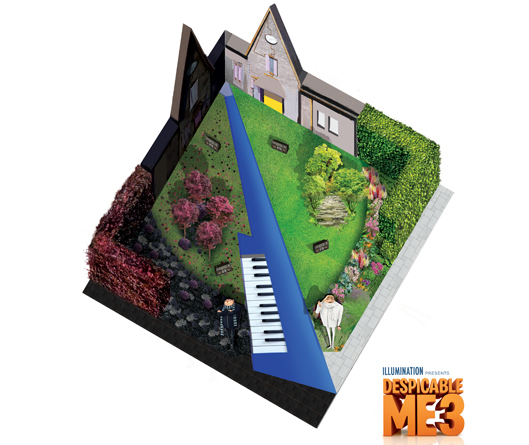
- Safety: Levels of safety are a matter of personal preference but they should be considered nonetheless . Essentially, If an element or feature makes you feel uncomfortable, then it’s not right for you. Items likely to cause safety concerns and which might warrant consideration include: steps and level changes, privacy, choice of hard landscape materials, plant choice (poisons, spikes and thorns), water and machinery and visibility. My personal philosophy (as a designer and dad) is to give children a lot of credit. In my experience, they do just fine until parents start fussing. In situations where I’ve designed ponds and so on, I’ve engaged children in the design and implementation. If they are given knowledge, respect and the chance to engage, you wont have any problem above and beyond that which they meet in every day life.
- Education: In addition to being a place for the trampoline and for mucking about, gardens can be great places for children to learn about growing plants, nature, recycling and their place in world. Some things you might consider include: small spaces for the kids to do their own gardening, bird and bat boxes, insect houses, fish and places to paint and draw, adaptable areas that allow them to rearrange and reinterpret to suit, tables and chairs, scrap books and nature boxes.
- Change: They don’t stay kids for long! Be wary of too much infrastructure for children. For example, constructing an enclosure for a trampoline. If are set on such things, be sure to plan for reusing the space when the kids outgrow it.
- Engagement: In my experience, kids love being part of the whole process. They like to be involved and invested, and making them a part of it can help to instill a lifelong relationship with plants and the outdoors. Ask your kids what they’d like in the garden, show them some pictures, observe how they interact with your garden as it is and build on it, give them defined spaces and suggested activities, ask them to invite their friends so they can show them, try to keep engagement throughout the year with seasonal activities (sowing, mowing, growing, harvesting, feeding and so on)
- Placement and storage: Locating children’s areas should be considered in terms of visibility (do you want to see them from the house or not!), access in and out, levels of exposure (preferably out of the sun) and storage of equipment (consider a temporary storage unit) and space for moody boots.

Barry Lupton MGLDA has been working in horticulture for almost 20 years. He holds multiple qualifications in horticulture, garden and landscape design and creative thinking. He is a fully accredited member of the Garden and Landscape Design Association (www.glda.ie) and has worked in various horticultural domains, including retail, commercial production and journalism. He has operated his own design practice for over a decade and continues to lecture in horticulture and design at Senior College Dun Laoghaire. He can be contacted at 086 349 22286 or via his website www.barrylupton.com
Source: Barry Lupton – Top Five Considerations for Children’s Gardens – Barry Lupton MGLDA




